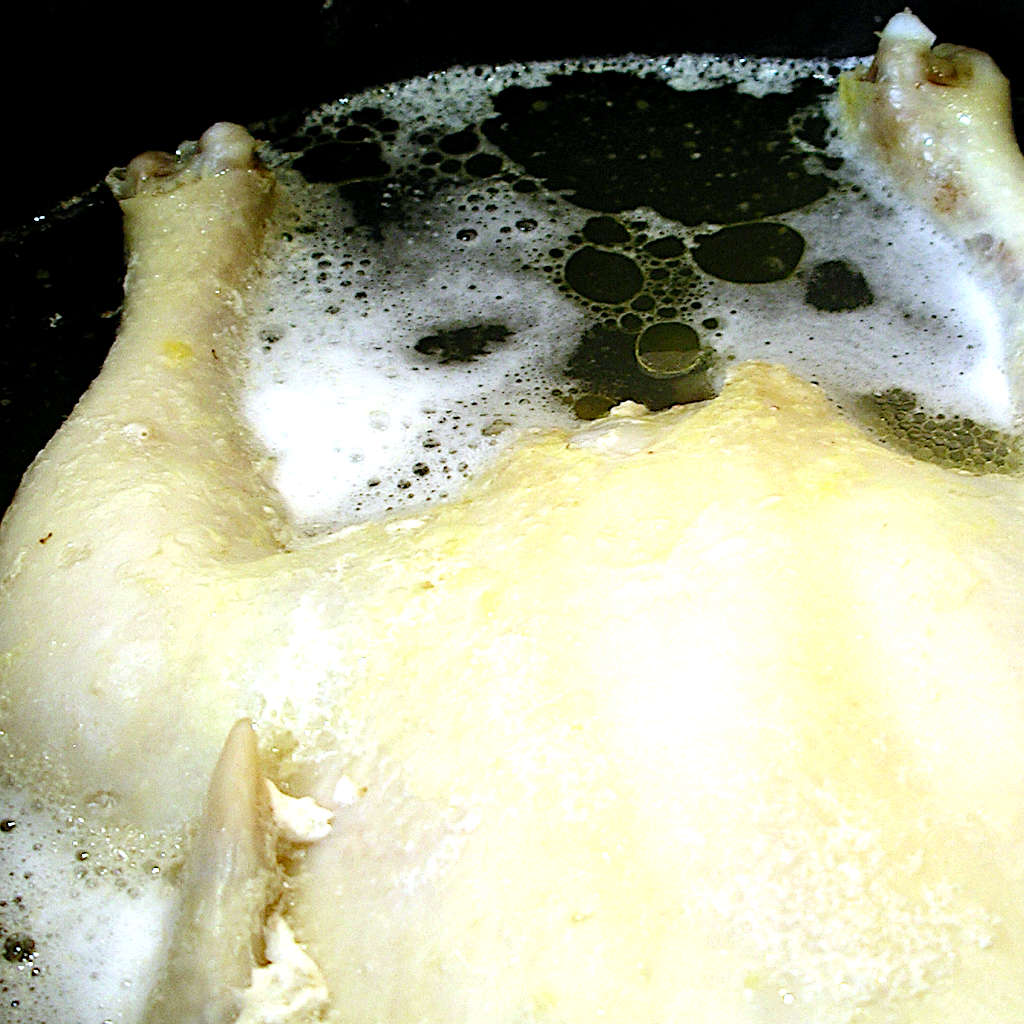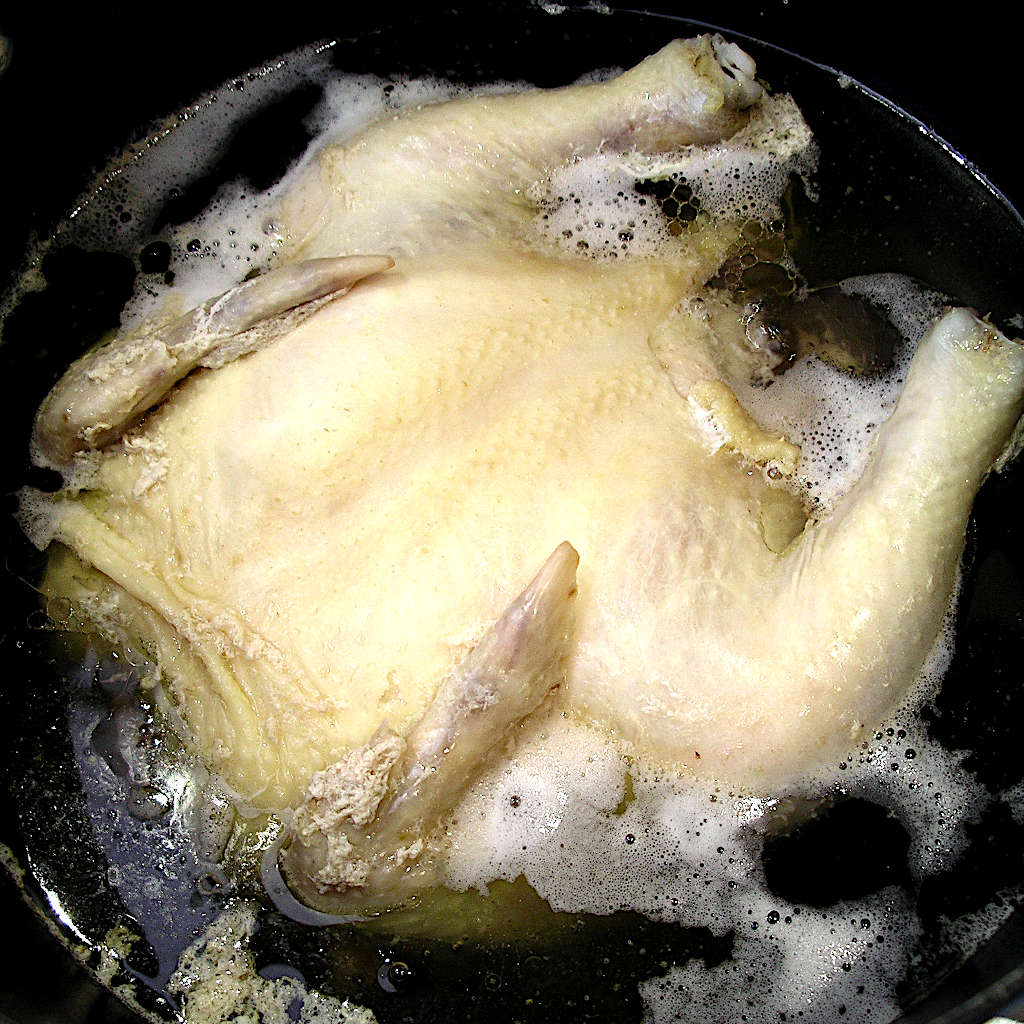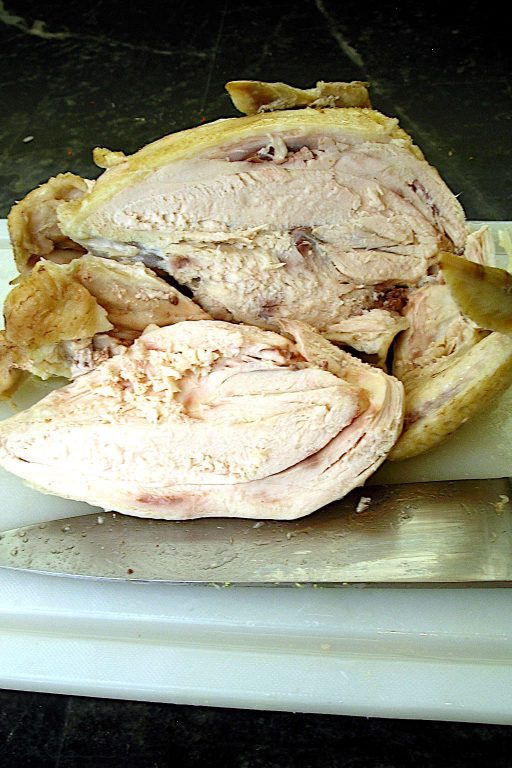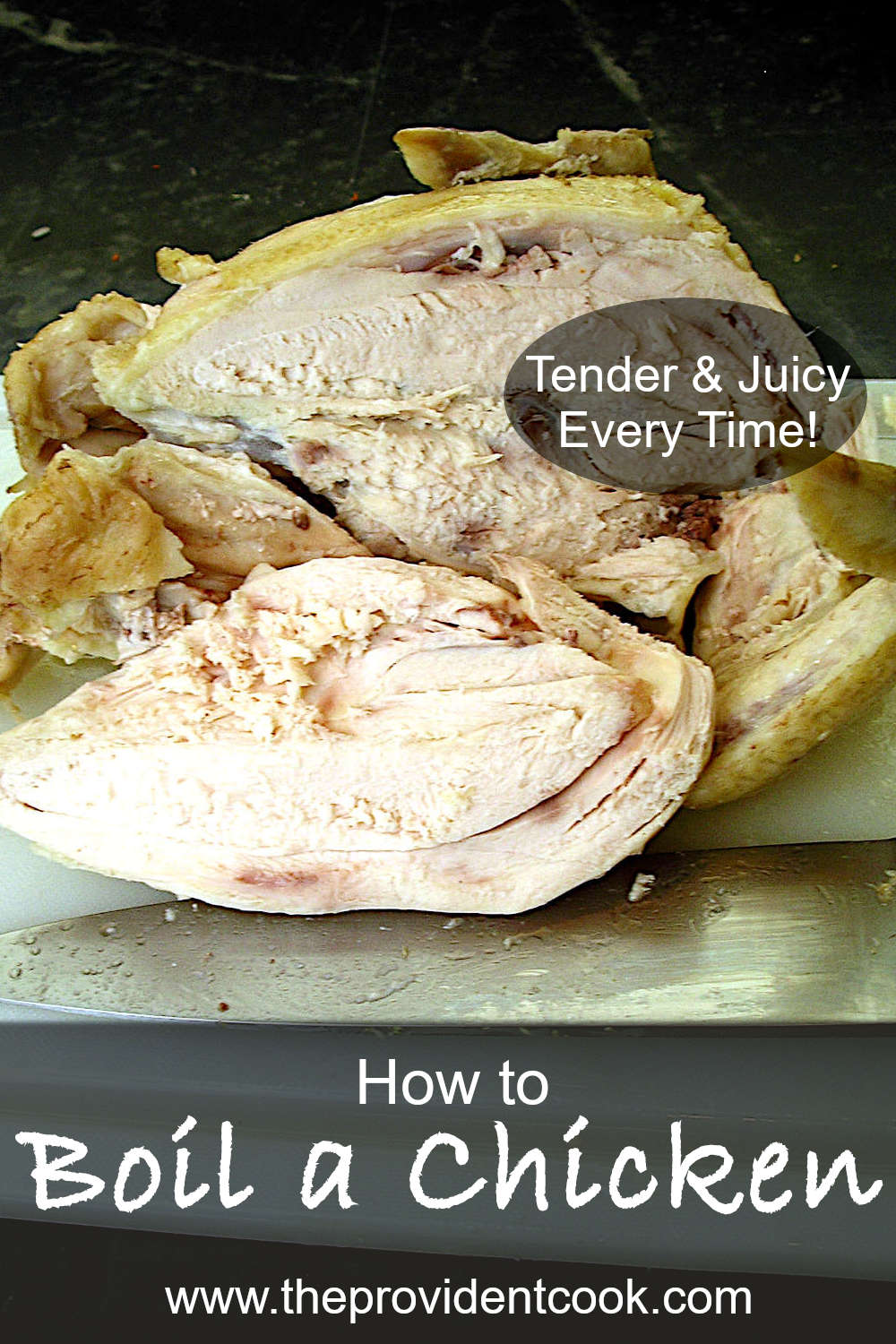How to boil a chicken is a skill that every cook should know. A few tips and tricks, and a little science, can help produce tender, juicy chicken every time.
Whole broiler/fryer chicken is one of my favorite budget cuts. I’ve found it on sale recently for as low as 88 cents per pound, though with the pandemic, it seems prices are going up. (As are the prices for almost everything else.) I recently bought whole chickens for $1.07 per pound at a big-box membership store, which is still pretty inexpensive for a protein.
I’ll admit that until later in life, I didn’t pay much attention to the techniques for boiling a chicken. As a result, way too often it came out dry, dry, dry, especially the breast meat. But with a little research and experimentation, I think I’ve come up with a sure-fire way to produce tender, juicy chicken (almost) every time.
How to Boil a Chicken
The most important tip on how to boil a chicken is: Don’t! Let me explain. Many authorities, including the American Meat Science Association, note that violent boiling toughens meat.
That makes sense – so many recipes call for braising in the oven or using a slow cooker to maximize tenderness.
So I don’t “boil” a chicken, ever. Instead, I lid the pot and heat the chicken and cooking liquid on Medium-high heat just to the simmer, then reduce the heat gradually to keep the liquid at a gentle simmer. It takes just 10 to 15 minutes usually to get the temperature stable, and then you’ll only need to check on it every 15 minutes or so.

What’s a Simmer, Then?
It’s easy to tell when a liquid is boiling, but a simmer is a little more… subtle? Rather than seeing large numbers of bubbles covering the surface of the liquid, you should see just one or two a minute breaking the surface as the liquid gently shimmers. A thermometer inserted in the liquid should register 195° F or close to it.
On my gas cooktop, it’s relatively easy to maintain a simmer, since I have a burner with a teeny center-simmer ring just for this purpose. On an electric cooktop, it’s a bit harder to achieve but doable with a couple of hacks. Try starting your pot on a larger burner to bring it up quickly to a simmer (and get the chicken into a safe temperature range) then move it to your smallest burner, set on the Medium-low to Low setting.
If the cooking liquid is still above the simmer with this hack, try setting the pot lid slightly ajar or use a wooden spoon under the edge of the pot lid to increase the gap as needed.
How Long Do You Boil a Chicken?
As a general rule of thumb, plan on about 10 minutes per pound – or about 50 minutes for a five-pound whole chicken. BUT – well, several things can lengthen or shorten the time needed. For example, if you don’t start your timer exactly when the simmer is reached, etc.
I generally start checking for doneness about 10 minutes before the estimated cooking time is up, i.e. at 40 minutes for a five-pound chicken. Insert an instant-read thermometer in the thickest part of the breast; it should be 180 degrees. It’s also a good idea to check the temp at the thickest part of the thigh (not touching the bone) just to be sure, since the dark meat can take longer to cook.
This is the other half of the equation for tender, juicy chicken, by the way. Gentle simmering is one, but the other is to not exceed the recommended cooking temperature (180° F).
A Few More Tips & Tricks
Chicken broth or stock helps season the chicken and adds richness, but you can certainly use just salted tap water if you wish. Remove the neck or giblets (if any) from the cavity and place the whole chicken, breast-side up, in a Dutch oven or large stockpot. The key is to add just enough liquid to come part-way up the sides of the breast; this helps further ensure that the breast doesn’t overcook.
Also, I use chicken base (like Better Than Bouillion) rather than broth, but I always add it after the chicken is done and removed from the pot. For some reason, I’ve found that if I add it initially, it can bind to the fat globules released as the chicken cooks, and is almost impossible to stir back into the liquid.

Use your cooked chicken in Chicken-Ramen Stir Fry, in chicken soup, or in any of the hundreds of other ways you can use cooked chicken!


